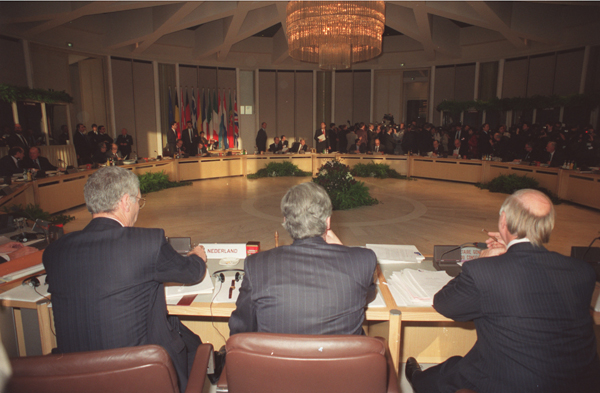Source

Source: Bildarchiv, B 145 Bild-00009285 REGIERUNGonline/Stutterheim
The collapse of Communism in Eastern Europe posed a number of new challenges for the European Community. Still, the twelve member states initially concentrated on deepening European integration. At a meeting in the Dutch town of Maastricht in 1991, EC heads of state and government agreed upon the Treaty on European Union (TEU). Under the treaty, the name “European Union” officially replaced “European Community.” The treaty saw a political union on the basis of and through the further development of the Single European Act as the end goal of integration. It called for the establishment of three “pillars” of cooperation: the pillar of the existing European communities was to be reformed and joined by two new pillars, “Common Foreign and Security Policy” and “Justice and Home Affairs.” The treaty also introduced the concept of European Union citizenship, which granted EU citizens the right to vote in local elections in member states and entitled them to consular support at the diplomatic missions of EU countries. Furthermore, a schedule for creating the European Economic and Monetary Union was agreed upon. The Maastricht Treaty needed to be ratified by member states; in Germany, it was challenged before the Federal Constitutional Court. It was only after the court handed down its ruling on October 12, 1993, that the treaty took delayed effect in Germany on November 1, 1993.
The photo shows EC heads of state and government at the Maastricht conference on December 9, 1991.

Source: Bildarchiv, B 145 Bild-00009285 REGIERUNGonline/Stutterheim